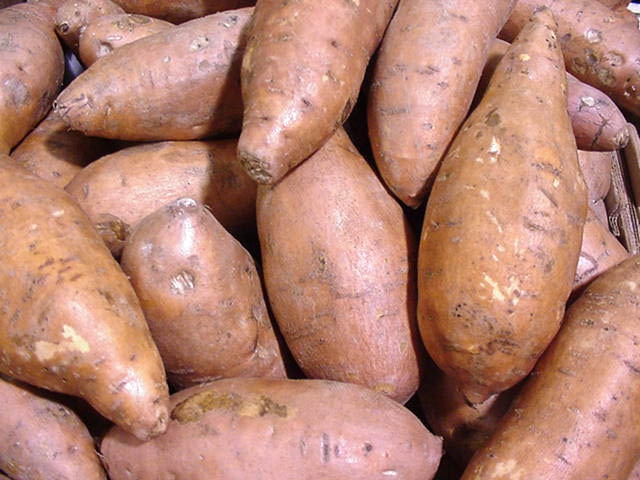
Study evaluates sweet potato genotypes for pest, disease resistance
A new study has identified 946 distinct varieties of sweet potatoes.The plethora of genotypes is incredibly important for breeding. The thorough characterization of each sweet potato accession, or group type, will help eliminate duplicate breeding.Additionally, the research can be used to breed different types to possess certain desired traits. For instance, a sweet potato could be developed to be able to resist a particular pest or disease, or to thrive in a harsh environment.
December 1, 2010

In Uganda, the sweet potato is a major staple crop. Behind China and Nigeria, Uganda produces the most sweet potatoes in the world. Nationwide, families grow the crop to feed themselves, their livestock and to use as a source of income. Small scale agricultural operations use a large number of sweet potato varieties in their planting. These varieties are steadily being lost due to weevils, sweet potato virus disease and environmental factors.
In an effort to identify, collect, evaluate, and mitigate the loss of important types, a study was conducted by the Sweet Potato Program of the National Crops Resources Research Institute in Namulaong, Uganda.
Initially, 1303 different genotypes were collected from 21 districts across Uganda. The collection was then planted at the Institute and harvested 90 to 100 days later. The sweet potatoes were placed into morphologically distinct groups after being evaluated for yield, dry matter content, and pest and disease resistance.
In the end, 946 distinct varieties were identified. The plethora of sweet potato genotypes is incredibly important for breeding. The thorough characterization of each sweet potato accession, or group type, will help eliminate duplicate breeding. Additionally, the research can be used to breed different types to possess certain desired traits. For instance, a sweet potato could be developed to be able to resist a particular pest or disease, or to thrive in a harsh environment.
According to the study’s author, Robert O. M. Mwanga, these discoveries are just the beginning of much more intense research.
“Further evaluation of the genotypes at phenotypic and molecular levels is needed to efficiently select genotypes that combine a number of useful traits for use as parents in hybridization schemes to produce improved cultivars for Uganda and Sub-Saharan Africa,” he says.
Moreover, the genotypes need to be duplicated at the International Potato Center in Lima, Peru and in other regional offices to conserve the distinct accessions.
Mwanga hopes that high yielding, pest and disease resistant, and nutritious varieties will be released for farmers in Uganda, and all over Sub-Saharan Africa.
The study was funded by a grant from the McKnight Foundation and the full study can be found in the November – December 2010 issue of Crop Science.
You May Also Like



